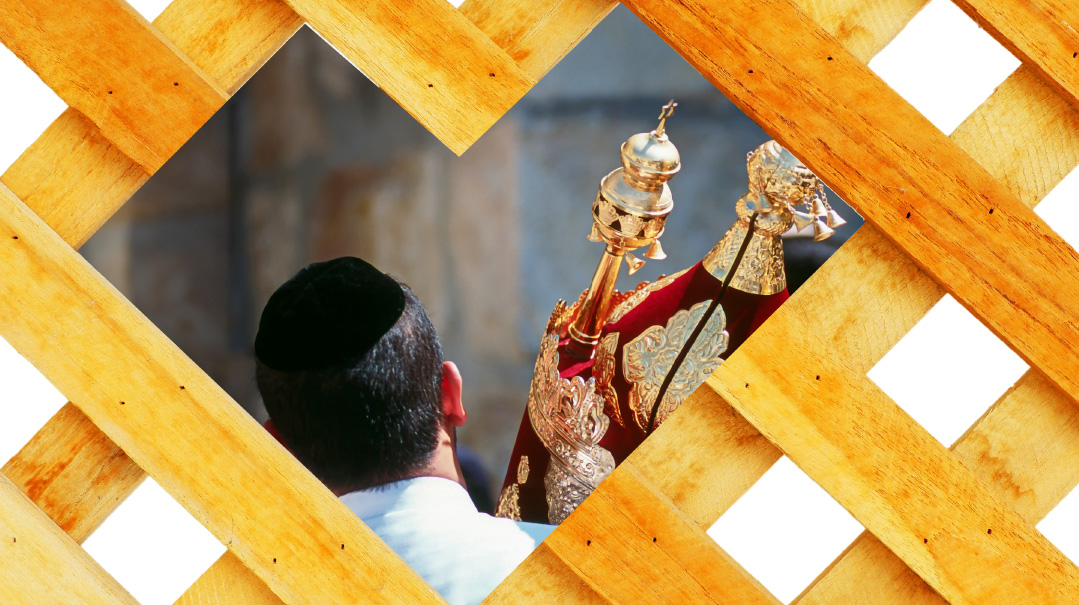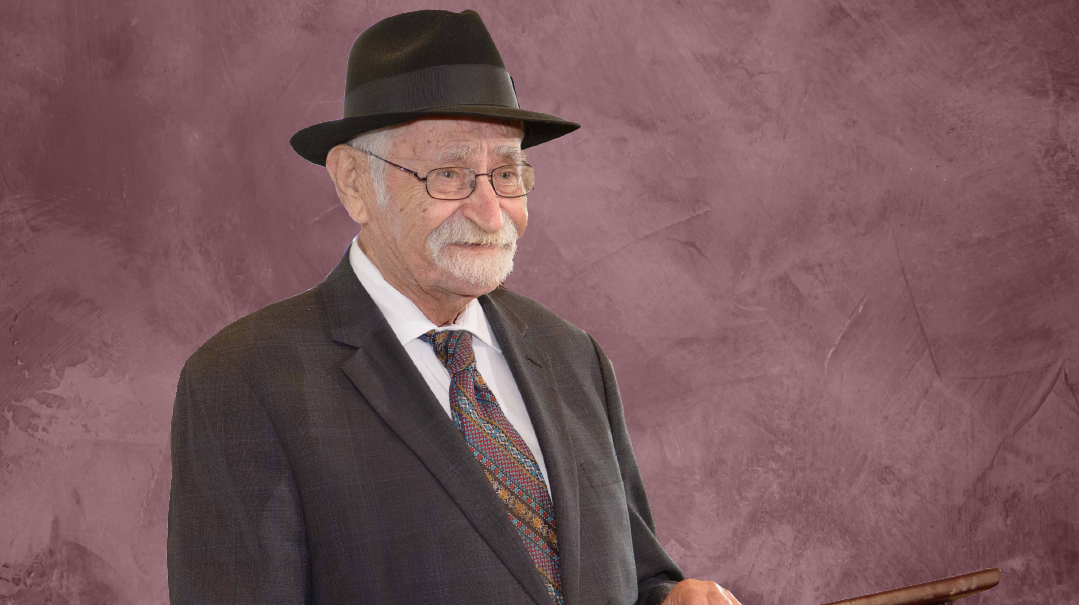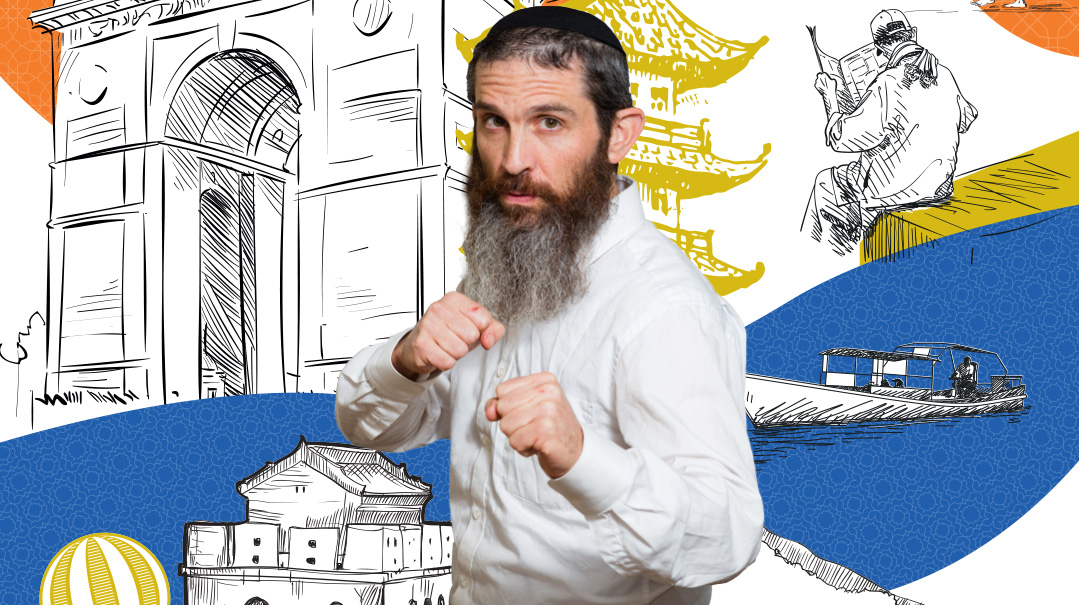The Torah is Everywhere
| September 26, 2023Their eyes met. In a single glance, his companion saw it all: the pain, the memories, the longing, the approaching end

T
he oncology ward in Schneider Children’s Medical Center of Israel is at the top of the building, the closest possible to Heaven, shortening the inevitable journey. The synagogue, however, is on the first floor. But G-d is everywhere, so there is no need to take a seven-story trip down.
It was Leil Simchas Torah. In a dimly lit room lay a 26-year-old man dying from lung cancer, a skeletal body with yellowish skin and burning eyes. He was not alone; his brother-in-law was sitting by his bed. They had met in the beis medrash of their yeshivah until life threw them into a hospital room: an inseparable chavrusa against a slightly different backdrop.
Lying there on the hospital bed, nothing gave away the turmoil in his mind. As if carried on the warm October wind, the imaginary soundwaves from his yeshivah brought memories of men hugging scrolls, beads of sweat breaking on their foreheads as they danced in the stuffy, packed beis medrash. He was not there, however, not even as an invalid spectator. But the Torah is everywhere; it is not the exclusive property of the beis medrash goers. The emotions stirring in him finally found escape in a cry that echoed in the quiet room:
“Let’s dance with the Torah!”
Their eyes met. In a single glance, his companion saw it all: the pain, the memories, the longing, the approaching end. He stretched out his hand, helping his friend stand up, and with the tubes and the oxygen, they started the journey from the seventh floor down. Breathing heavily, taking small, agonized steps, it took an hour to reach the hospital’s synagogue.
The stark difference hit them. The empty room was nothing like the beis medrash they’d left behind. But the Torah is everywhere; it is not confined to the halls of the beis medrash. It is not in the heavens, not beyond the seas. It might as well be in a hospital’s empty synagogue. They slowly opened the holy ark, took out two scrolls, and they danced, and they cried, and they danced. The beis medrash was far away, the hospital smelled of bleach and medication and despair, but that night, all alone, they danced with the Torah.
Four months later, surrounded by his fellow yeshivah students, he died. And when the shivah was over, his companion buried himself in the beis medrash.
I heard that story on Leil Simchas Torah ten years later, as I was watching the dancers in the same beis medrash of their yeshivah. The young man was long gone, his companion was there, dancing with a scroll. We were all part of the same community, with the yeshivah at its center.
My brothers were there too, but for them, it was home. I was only a guest, invited to partake in the festivities until the scrolls were put back, the dancers took their seats by the table stands, and the door was closed behind temporary visitors like me. I was a close friend of the dying boy’s sister and a frequent visitor to their home. I remembered them well through their years of struggle and thought that their share of stories was exhausted in the shivah. But apparently, they saved some for an inner circle, and that Simchas Torah story I heard that night was one of them.
I was standing behind the mechitzah when the words found their way to my ear, barely audible above the exuberant singing. The young man’s bereaved sister told it to me, the wife of his chavrusa — the brother-in-law; letting me, for a brief moment, enter their private Gehinnom of aching grief.
“It always reminds me of him,” she said, “the dancing, the Torah, his last Simchas Torah in that deserted synagogue.”
Even her husband became a painful reminder on Leil Simchas Torah. She watched him closely through criss-crossed wooden fence panels, never quite visible through the tiny holes. I did not mind looking through the panels. My mindless gaze was not focused on anyone. Watching the swirling dancers, I felt a pang of envy, as I always did on Leil Simchas Torah: envying those who would stay safe inside the walls of the beis medrash even after the holiday was over, while I would have to wait a whole year until I was allowed in again.
For her, his wife, a glimpse did not suffice. Criss-crossed panels show only a partial view, and her husband kept disappearing. “The whole year I give myself for his Torah! Don’t I deserve to see him once a year, as he rejoices in it?”
She stood up and walked to the door that separated the ezras nashim and the beis-medrash. Pushing it gently, she stood at the threshold, watching her husband. A man approached and asked her to close it, but she did not move. She demanded a din Torah.
“I went to the rosh yeshivah,” she proudly told me.
What exactly she said there, nobody knows. But he ruled in her favor, and they removed the panels and hung lace curtains instead, the kind that float in the air for those who yearn for the Torah behind the mechitzah.
Later that year, sitting on her balcony, facing the yeshivah, the lights of the beis medrash flickering below us, she told me what she had learned from that Leil Simchas Torah.
“It’s not about the beis medrash,” she said to me, “and who is admitted and who is left out, and what you can see through the mechitzah, and what you cannot. The beis medrash is just a space, but the Torah is too wide to be confined to four walls. A beis medrash is anywhere where you take the Torah with you. My brother created his own beis medrash at the hospital on his last Simchas Torah. I can build my own beis medrash too, in my home, in the ezras nashim, or wherever I decide to take the Torah with me. There is no center and there are no margins. There are thousands of little spaces that we create wherever we take the Torah with us. Thousands of batei medrash.”
Whenever I drive by the hospital, or see a beis medrash, or stand behind a mechitzah, I always think about what I learned from what seemed to me, back then, like marginal Simchas Torahs.
Noa Offek is a high school English teacher and an assistant professor at Bar-Ilan University. She lives in Petach Tikvah.
(Originally featured in Mishpacha, Issue 980)
Oops! We could not locate your form.







